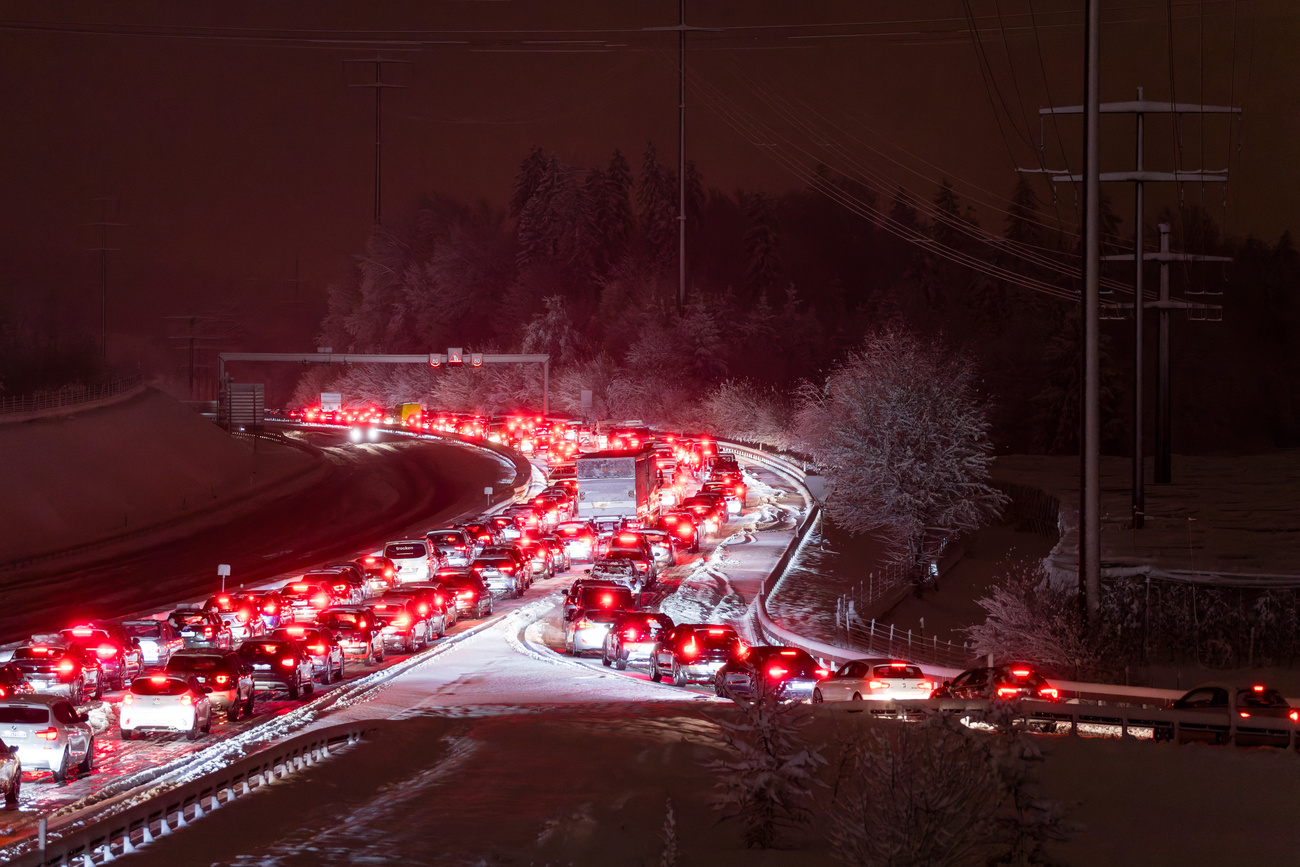Snow buffers ski industry against crisis

Prospects look good for the winter tourism season, but the fallout from the global financial crisis could start to be felt next year, tourism experts have warned.
Around 100 specialists from Europe and the United States, who recently met in the Swiss resort of Zermatt, found that while most sectors of the economy were affected by the global downturn, the ski industry was still solid.
“The season is going very well and, given the number of reservations, we know it will continue until Easter,” Fulvio Sartori, assistant director of the Swiss ski lift association, which represents 650 firms, told swissinfo at the International Tourism Symposium.
Other operators are also happy with current results. “With good snow cover at all altitudes, the season is going very well,” said Laurent Reynaud, director of the national union of cable cars in France.
In North America numbers are up by ten per cent for the same period due to the snow conditions.
But words of warning came from economist Oliver Fritz, of the Austrian Institute of Economic Research, who told the symposium that resorts would certainly be seriously affected next winter.
The effects of the crisis are more likely to favour ski resorts that are closest to urban centres, such as Quebec, says Michel Archambault of the University of Quebec.
In the US, where a day’s ski pass can sometimes exceed $100 (SFr118), experts believe that the recession will probably affect resorts popular with the middle class.
Different markets
Eighty countries have ski industries, comprising 1,700 resorts and six million beds. The Alps have the biggest share of the market (42 per cent), followed by North America (22 per cent) and Asia, mainly Japan (ten per cent).
On a country-by-country basis, the US boasts the largest number of resorts (481), followed by France (360), Austria (260), Canada and Switzerland (240 each). France has 14 large resorts and Austria has 12, compared with seven in the US and Switzerland, and just one in Canada.
The US, with its enormous domestic market, has the fewest skiers from abroad (just six per cent), while foreign visitors constitute two-thirds of business in Austria, particularly in the east of the country.
“The main difference is that US resorts aren’t generally near major cities, and tourists have to stay there to ski,” said David Riley, CEO of the Telluride ski and golf resort in Colorado.
Switzerland is not too badly off with half of all skiers coming from abroad, better than France with 28 per cent and Italy with less than 20 per cent.
Quality
Remedies for coping with the financial crisis appear different everywhere.
American experts are focusing on beginners, encouraging them to pursue winter sports. In Canada, children are introduced to skiing at a very young age by training them to use small slopes in the school courtyard.
The system is more complicated in the US where population growth is mainly due to black or Hispanic immigrants, who are less familiar with winter sports. “We must learn how to work with diversity,” Riley said.
Reynaud added: “We must seriously think about preparing the next generation. It is thanks to baby boomer skiers that we are doing so well now.”
Demographic trends are also at the heart of the problem in the Swiss Alps said Sartori, who noted however that the figures were uncertain and that operators did not know their customers well enough.
The majority at the Zermatt symposium believed that the best recipe for withstanding the crisis is to focus on quality.
“We do not believe in [the low-cost market] in this field. This is not a development model for us,” added Reynaud.
swissinfo, Olivier Grivat in Zermatt
Marked ski pistes: 7,400km
Marked cross-country ski trails: 5,500km
Marked winter walking trails: 2,900km (largest network of winter walking trails in the Alps)
Marked snowshoe trails: 2,100km
European altitude record: 29 winter sports areas are located above 2,800m (average altitude)
Marked and prepared slope with the greatest vertical drop:
Klein Matterhorn-Zermatt: 2,300m (most in Europe)

In compliance with the JTI standards
More: SWI swissinfo.ch certified by the Journalism Trust Initiative













You can find an overview of ongoing debates with our journalists here . Please join us!
If you want to start a conversation about a topic raised in this article or want to report factual errors, email us at english@swissinfo.ch.